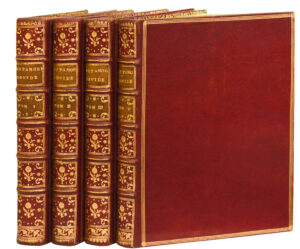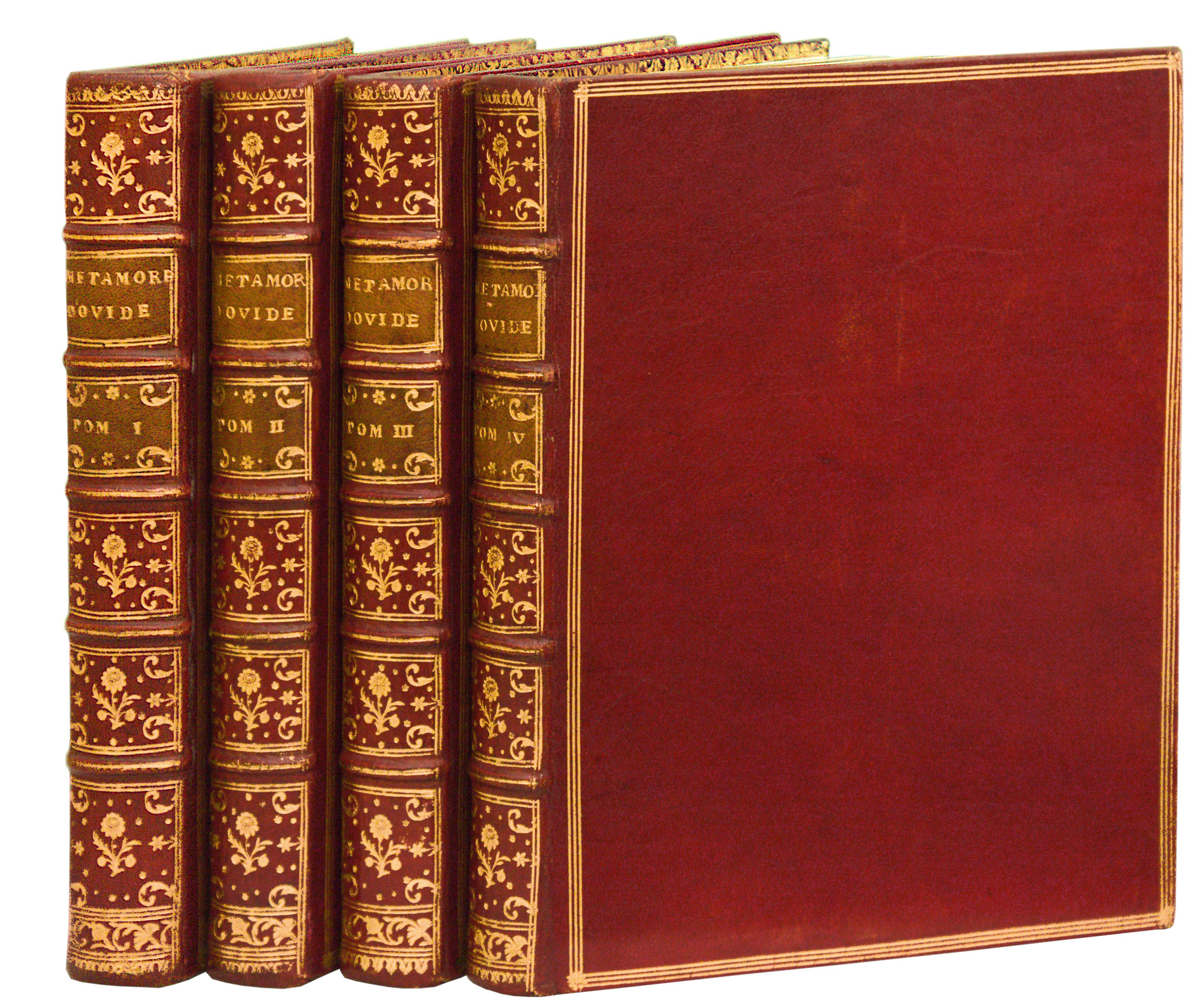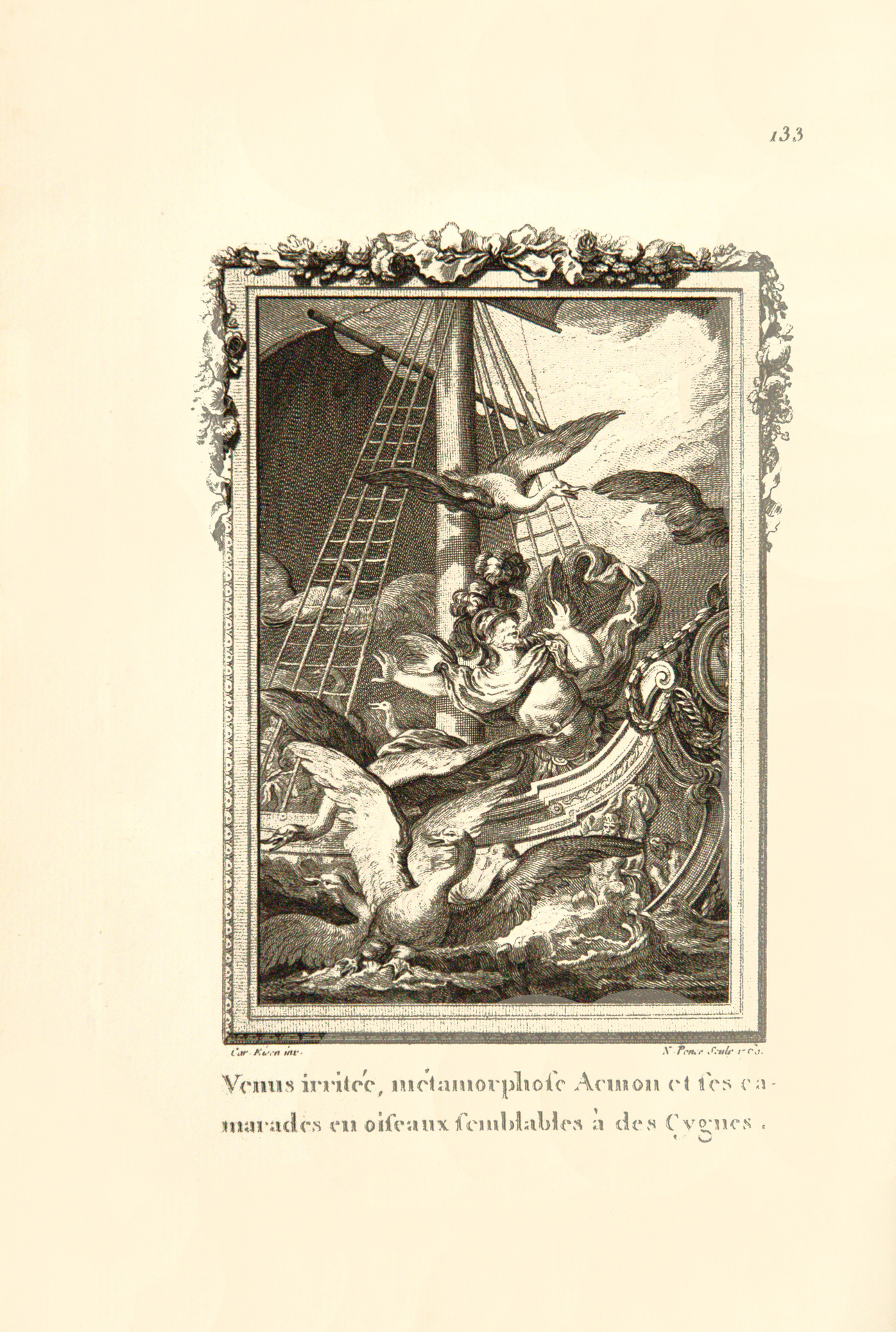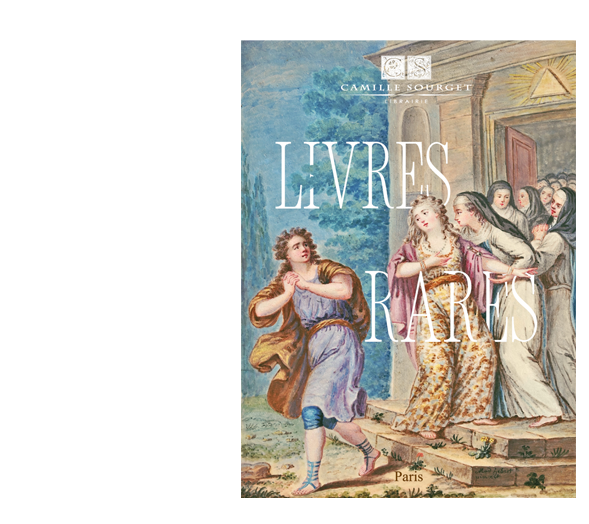Paris, chez Barrois, 1767-1771.
4 volumes 4to [255 x 190 mm ] of : I/ (2) ll., 1 frontispiece, (2) engraved ll., xc pp., (1) f., 264 pp. 47 plates out of pagination ; II/ viii pp. 355 pp. 33 plates ; III/ viii pp. 360 pp. 37 plates ; IV/ viii pp. 367 pp. 8 pp. 23 plates out of pagination.
Red morocco, triple gilt fillet around the covers, spine ribbed and decorated, olive morocco lettering-pieces, double gilt fillet on the edges, inner border, gilt edges. Contemporary binding.
First print run of one of the most famous french books of the 18th century.
Picot, Livres du Baron Rothschild, I, p. 218, n°409; Bulletin de la Librairie Morgand et Fatout, III, 8976 and 10578.
“Superb work due to the care of the publisher Basan and the engraver Le Mire. It is one of the most gallantly illustrated of the whole century.” (Cohen, Livres à gravures du XVIIIe siècle, col. 769-772).
“This is one of the most beautiful illustrated books of the 18th century ornamented with a frontispiece, 3 pages of dedication,4 fleurons on the titles of the volumes, 30 vignettes, 1 cul-de-lampe, and 139 drawn by Boucher, Eisen, Gravelot, Leprince, Monnet… Engraved by de Launay, Lemire… The frontispiece, the dedication plates, the cul-de-lampe, the fleurons of the first three volumes and the vignettes are drawn and engraved by Choffard.”
“Eisen also executed at the same time his remarkable work for the ‘Metamorphoses of Ovid’, whose compositions are so worthy to appear next to those of Moreau, Gravelot and Monnet, chosen like him by the publishers Basan and Le Mire, for the ornamentation of their beautiful book. We had the pleasure to admire these surprising pencils, drawn from 1766 to 1769, so precise, so graceful and so delicate. The subjects are generally more serious than those he usually treats; the works of Hercules and the adventures of Apollo are among the most interesting series.” Baron Roger Portalis, Les dessinateurs d’illustrations au XVIIIe siècle.
The work (one of the most significant of the literature of Ancient Rome) contains in more than 12,000 verses, the recital of two hundred and forty-six fables on the Metamorphoses, arranged chronologically from chaos to the metamorphosis into a star of Julius Caesar and chosen among the rich repertoire of Greek tradition and also among the Roman fables.
The vitality of the work is endless; the Middle Ages did not consider it inferior to the works of Virgil; in the 13th century, we finally witnessed a true Ovidian Renaissance. In Italy, in France, in Germany, it was the handbook of love. It had a notable influence on the Englishman Chaucer, on all Italian humanist poetry, on the scholarly style and on the poems of the French-Dutch philologists.
A superb copy bound in contemporary red morocco.
Provenance : John Broadley with ex libris.



